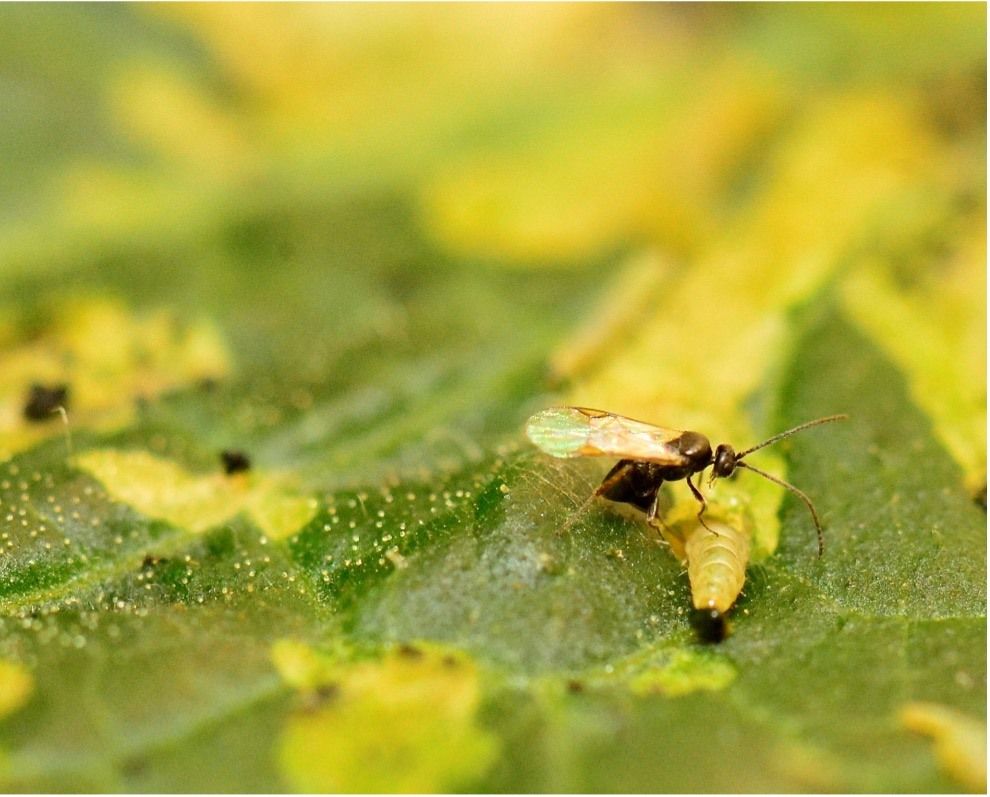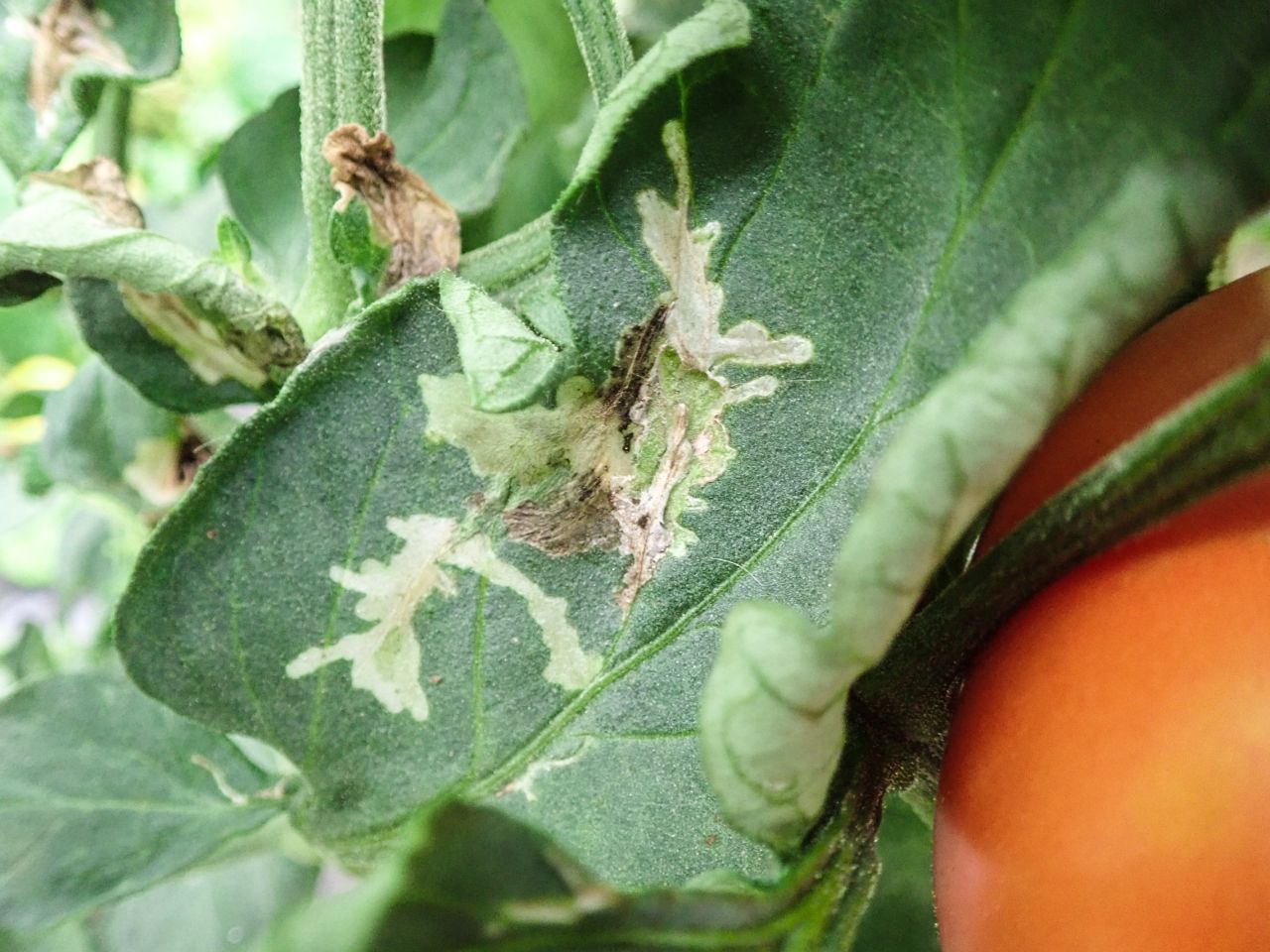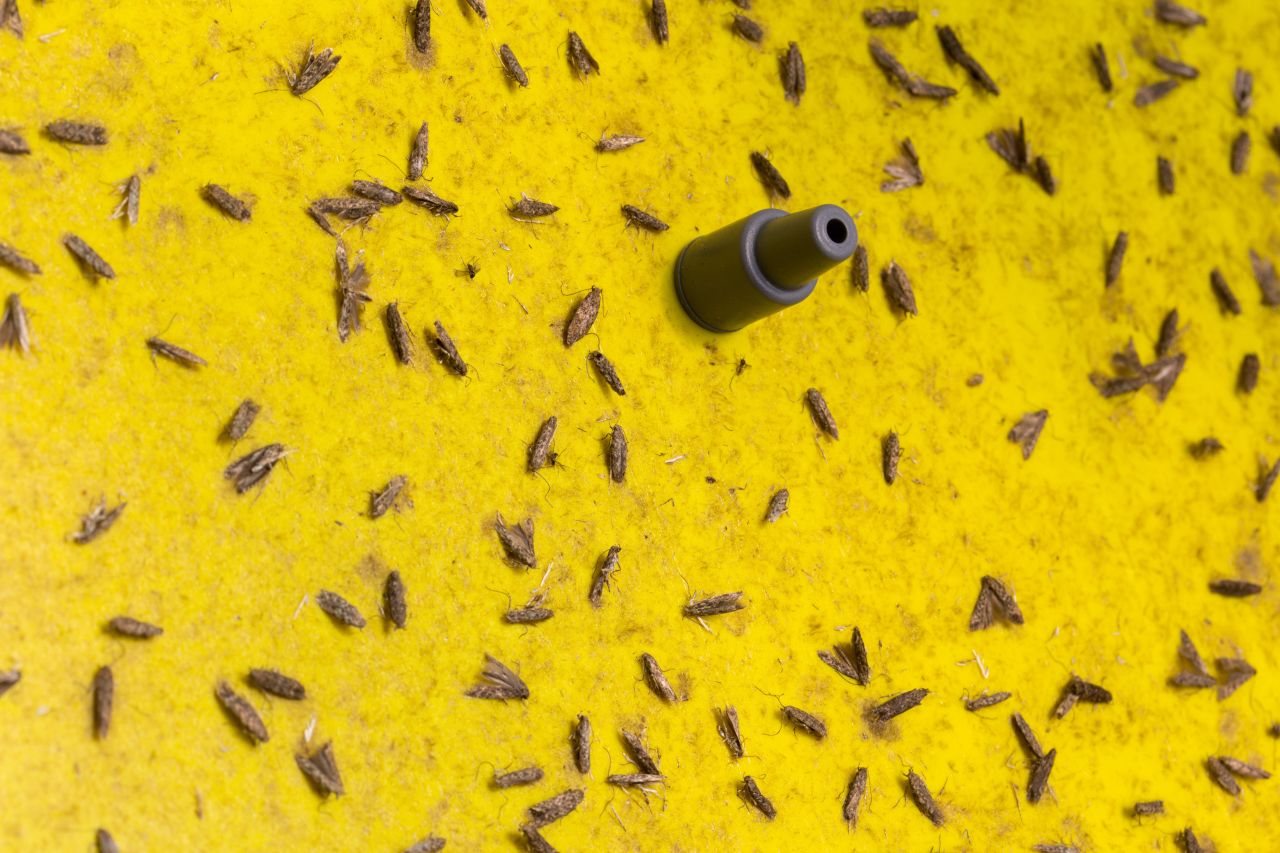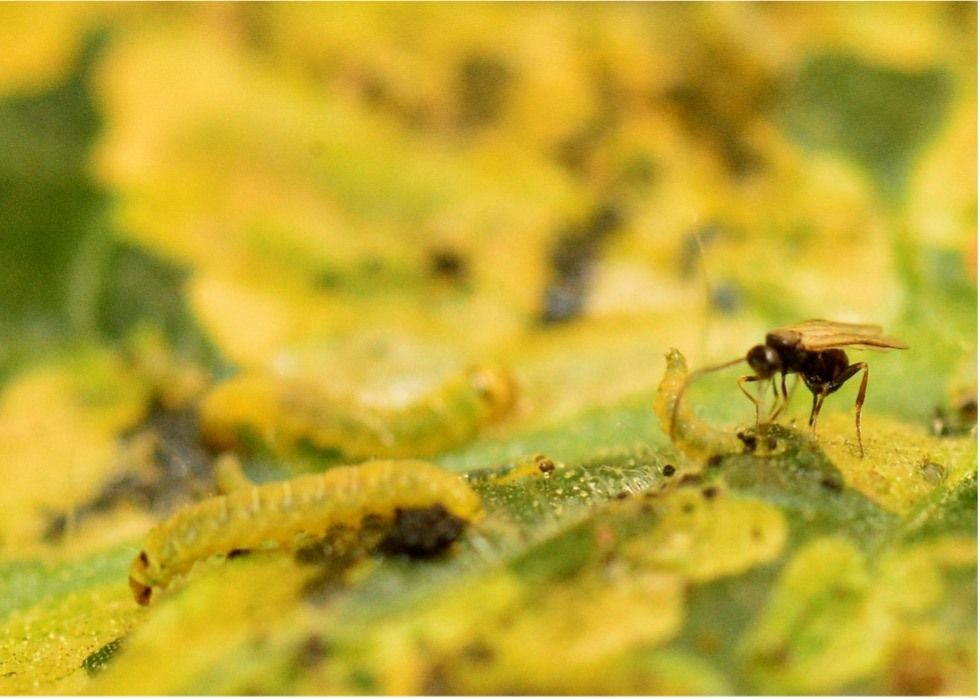Tiny wasps, big impact: protecting tomatoes from a devastating pest
Tomato crops worldwide face a major threat from the relentless tomato leafminer. This invasive moth has spread across multiple continents, wreaking havoc on harvests. But there is a promising solution on the horizon.

Female Dolichogenidae gelechiidivoris attacking a larva of Tuta absoluta. Image: © M. Waldburger, Agroscope
Classification
- Kingdom
- Animalia
- Phylum
- Arthropoda
- Class
- Insecta
- Order
- Lepidoptera
- Family
- Gelechiidae
- Genus
- Tuta (recently reinstated Phthorimaea)
- Species
- Tuta absoluta
Tomatoes are one of the most widely cultivated and consumed crops worldwide, but they are under constant threat from the tomato leafminer (Tuta absoluta). Originally from South America, this small but destructive moth has spread across Europe, Africa, and Asia, causing significant agricultural losses. If left unchecked, the tomato leafminer can completely devastate the harvest, making it one of the most challenging pests for tomato producers. The moth lays its eggs on tomato plants, and upon hatching, the larvae tunnel into the leaves, stems, and fruits. This feeding behavior weakens the plant, reducing fruit quality and yield.
The tomato leafminer’s life cycle lasts 24-38 days, varying with temperature. Females lay eggs on the underside of leaves, which hatch in 4-5 days. The larvae tunnel into leaves, stems, or fruits, creating mines that damage crops. They pass through four growth stages before pupating in soil, leaves, or mines. After 10-13 days, adult moths emerge, hiding during the day and becoming active at night. A female can lay up to 260 eggs Under favorable conditions, 10–12 generations can develop in one year.
To view this content, you must accept marketing and third-party cookies.

Larva of the tomato leafminer. Image: Adobe Stock
Economic and agricultural impact
The economic damage caused by the tomato leafminer is severe, affecting both small-scale farmers and large agricultural industries. Because the pest has become resistant to many insecticides, controlling it requires frequent and expensive pesticide applications, increasing production costs. Additionally, tomato losses due to infestation lead to reduced yields, higher tomato prices, and economic strain on farming communities.

Damage caused by larvae of the tomato leafminer. Image: Adobe Stock
In sub-Saharan Africa, where tomatoes are a major staple crop, the economic losses are particularly devastating. Kenya reports $59.3 million in annual losses, while Zambia loses approximately $8.7 million per year due to the tomato leafminer. These figures highlight the urgent need for sustainable pest control solutions to protect food security and farmer livelihoods.
Current control methods

Adult tomato leafminer moths caught on a sticky pheromone trap. Image: Adobe Stock
Efforts to control the tomato leafminer vary by region, with Europe largely relying on Integrated Pest Management (IPM). IPM combines biological, cultural, chemical, and mechanical control methods to minimize pest damage while reducing environmental harm.
- Biological control: Natural predators like mirid bugs and microbial biopesticides.
- Mating disruption: Pheromone-based traps confuse male moths, reducing reproduction rates.
- Monitoring tools: Sticky and pheromone traps help detect early infestations, allowing for timely intervention.
- Cultural practices: Crop rotation, farm hygiene, and seasonal production breaks help disrupt the pest’s lifecycle.
- Chemical control: Selective use of insecticides prevents T. absoluta outbreaks while avoiding resistance buildup and preserving beneficial insects.
Despite these efforts, the pest remains difficult to control, leading researchers to explore alternative solutions such as parasitoid wasps.
The role of parasitoids in biocontrol
Parasitoid wasps are natural enemies of insect pests, generally laying their eggs inside or on the host larvae. When the wasp larvae hatch, they consume the host from within, preventing the moth from reaching adult stage. Unlike general predators, parasitoids are often highly specialized, making them an effective and eco-friendly pest control solution.

Female Dolichogenidae gelechiidivoris wasp attacking a Tuta absoluta larva. Image: © M. Waldburger, Agroscope
One parasitoid species showing promise is Dolichogenidea gelechiidivoris, a wasp from South America that has followed its host the tomato leafminer and is now naturally establishing in Spain. A field study in northern Spain found that this species naturally kills up to 60% of T. absoluta larvae. This rate could likely be enhanced by introducing the parasitoid early in the pest’s life cycle. Compared to a native European parasitoid (Necremnus tutae), D. gelechiidivoris showed higher parasitism rates and better host-finding ability, making it a strong candidate for biocontrol programs.
Future perspectives
As the tomato leafminer continues to threaten global tomato production, it is clear that new sustainable pest management options are urgently needed. Parasitoid wasps offer a natural alternative, reducing chemical dependence while protecting crops. When integrated into existing pest management programs, biological control could significantly improve tomato yields and reduce economic losses.
With continued research and investment, the parasitoid wasp Dolichogenidea gelechiidivoris could become a powerful weapon in the fight against one of the world’s most destructive agricultural pests, ensuring a stable, sustainable future for tomato farmers and, ultimately, protecting the future of one of the world’s favorite foods.
References
Gonthier, J. (2023). Improving the efficiency of biological control with parasitoids for Tuta absoluta pest management (Doctoral dissertation, Universität Bern).
Gonthier, J., Arnó, J., Romeis, J., & Collatz, J. (2024). Insight into the host-specificity of a native and a newly introduced parasitoid of Tuta absoluta and prospect for biological control. Biological Control, 191, 105464.
